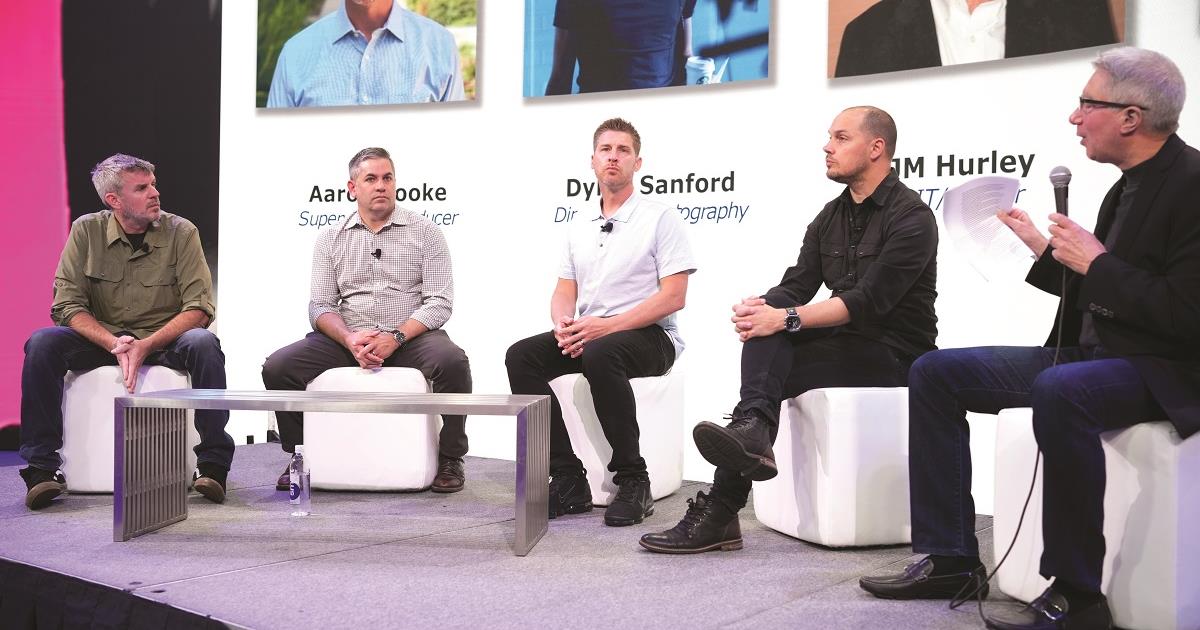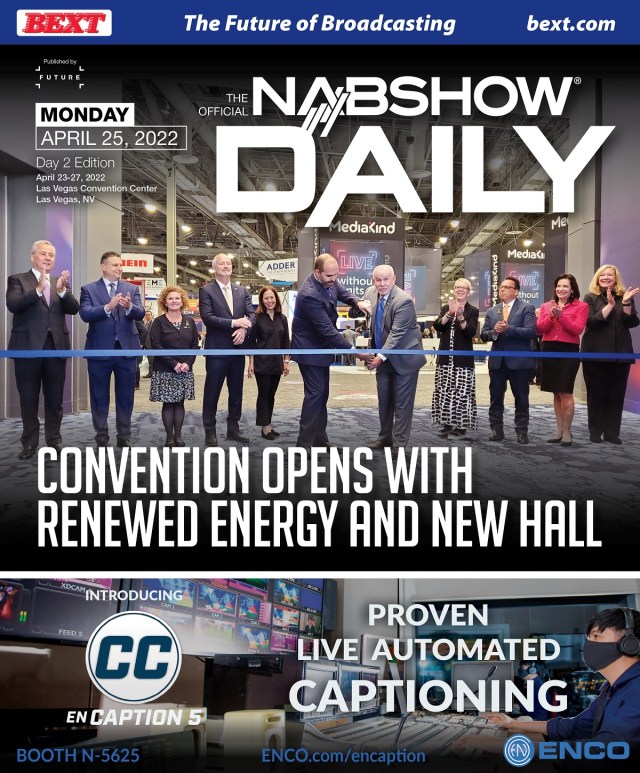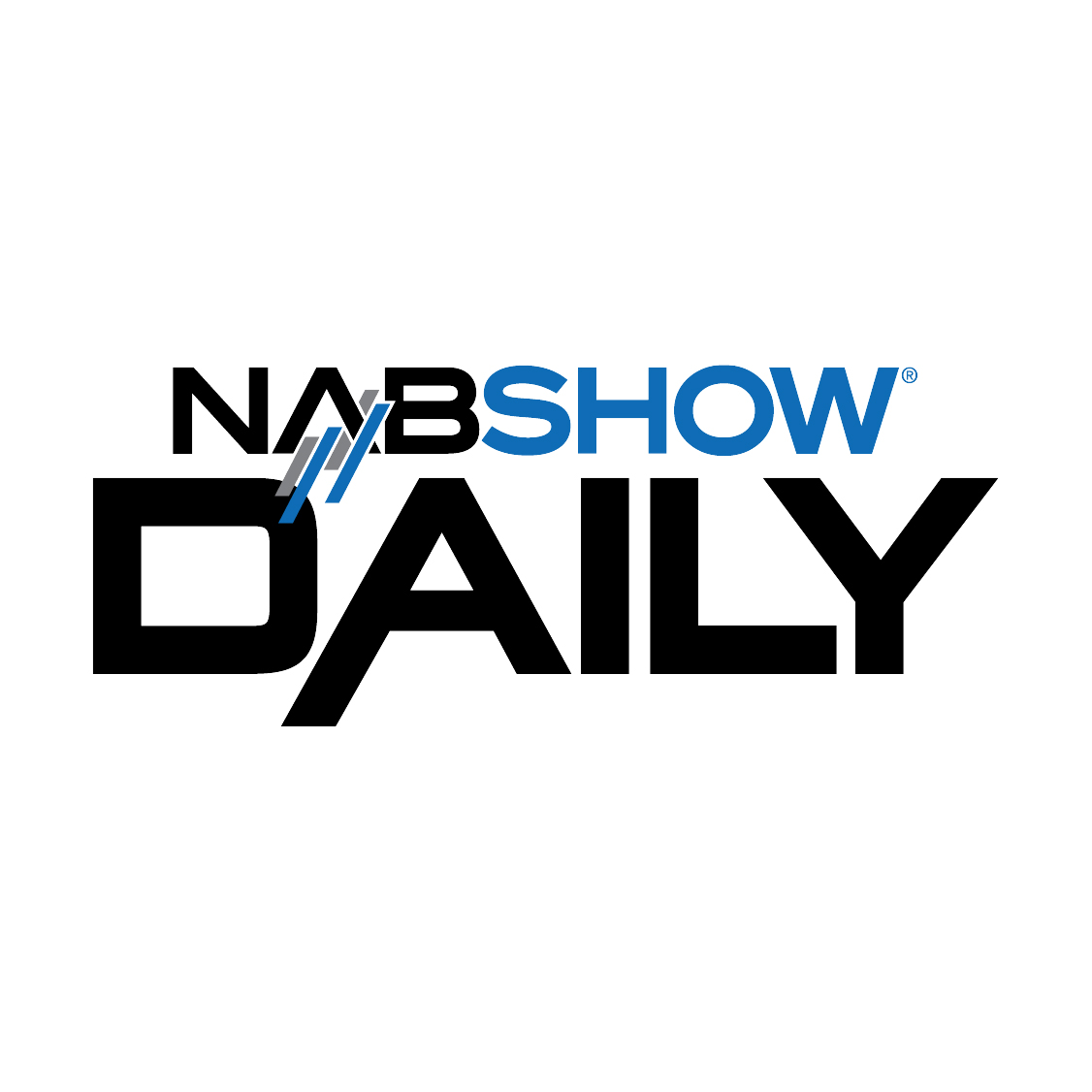
Historic halftime show marked camera technology’s first use at the big game
By George Winslow, TV Tech
Key technical personnel from the landmark Super Bowl LVI halftime show gathered at a Sunday NAB Show panel to discuss their successful use of cine cameras for the live production and what they see as a bright future for the technology’s use in multicamera live events.
Digital cine cameras have become increasingly popular in film, scripted TV and other productions because of their larger sensors, which offer greater depth of field and more creative options for a more “cinematic look” than traditional broadcast cameras.
Workflows for cine cameras have significantly improved in recent years, said JM Hurley, video engineer on the halftime production. That makes it technically possible to embrace the idea. And the greater creative control they offered made using them a relatively easy decision, said event producer Aaron Cooke.
Even so, the halftime production team spent months testing equipment, figuring out the right lenses to use and selecting the right setup, followed up by 10 to 12 full rehearsals at Los Angeles’ SoFi Stadium in the week before the Feb. 13 NBC telecast. The team also set a backup plan that included using the game’s broadcast cameras to capture the halftime show, or to even show a recording of one of the final rehearsals.
Those backup plans seemed prescient when the last Friday night rehearsal was a “s***storm,” according to Cooke. But the final production went off perfectly, prompting all of the panelists to agree that the rapid advance of cine camera workflows and production technology showed live cine camera production’s great potential.
The chief advantage of using the cine cameras was greater creativity, particularly with the depth of field that allowed photographers to isolate the artists and stage when needed and, at other times, show the audience, cinematographer Dylan Sanford said.
“We are seeing a breakdown in the barriers between cine production and live cine production, and I think we’ve only just begun to scratch the surface on what that really means,” Sanford said. “I think the audiences are getting more savvy and the talent is asking for it. They understand what those differences are, whether they know the technology or not, and they viscerally understand the distinction of what you can do with it. So they’re going to be asking for cinema live.”
While the NFL and other leagues have been experimenting with the use of cine cameras in games, most of the panelists saw the most obvious applications in other live events or music. Football fans don’t want to have a tight focus on one player with the rest of the field out of focus, Hurley noted.
“It was kind of undetermined about how stable this workflow was but that now we’ve shown that it works, the focus is now on what can be done with it and the creativity different camera systems, different lenses, different workflows can open up,” technical coordinator Morgan Kellum said.
“NAB Cine Consortium Presents: Cine-Live Case Study: Super Bowl 2022 Halftime Show” session was moderated by Mark Chiolis, the director of Business Development for Mobile TV Group.





